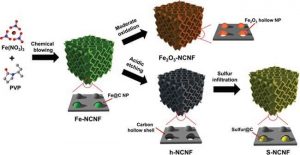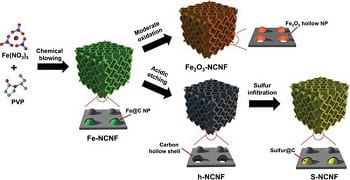 Lithium-ion batteries have successfully powered millions of portable electronics. However, their performance is approaching the limit as a state-of-the-art electrode material. The fast depletion of fossil fuels and associated environmental concerns is driving people to seek for new materials that can store and deliver more energy efficiently for the next-generation batteries. Graphene has shown great potential in energy-related applications, including batteries, supercapacitors and solar cells. However, its practical application is greatly hindered by the extravagant cost. On the other hand, graphene itself does not provide sufficient active sites for lithium intercalation. It should be integrated with the active materials such as metal oxides, silicon and sulfur or heteroatoms (e.g., N, S, etc.) via a complex process to achieve high capacity for lithium storage. These problems boost great interests in developing a substitute for graphene with balanced costs and properties for upcoming energy storage techniques.
Lithium-ion batteries have successfully powered millions of portable electronics. However, their performance is approaching the limit as a state-of-the-art electrode material. The fast depletion of fossil fuels and associated environmental concerns is driving people to seek for new materials that can store and deliver more energy efficiently for the next-generation batteries. Graphene has shown great potential in energy-related applications, including batteries, supercapacitors and solar cells. However, its practical application is greatly hindered by the extravagant cost. On the other hand, graphene itself does not provide sufficient active sites for lithium intercalation. It should be integrated with the active materials such as metal oxides, silicon and sulfur or heteroatoms (e.g., N, S, etc.) via a complex process to achieve high capacity for lithium storage. These problems boost great interests in developing a substitute for graphene with balanced costs and properties for upcoming energy storage techniques.
Led by Prof. Jieshan Qiu, the research group at Dalian University of Technology has developed an efficient strategy for general synthesis of 3D N-doped carbon nanosheet frameworks functionalized with metal nanoparticles or various hollow nanostructures for efficient lithium storage. The synthesis of metal-decorated carbon nanosheet frameworks is achieved by a metal-salt-assisted polymer-blowing process. Such a top-down strategy renders their products with robust texture and intimate structural interconnectivity that are difficultly attainable in 3D architectures constructed by bottom-up assembly of graphene. The metal-decorated carbon nanosheet frameworks provide an attractive structural platform to build 3D frameworks of carbon nanosheets decorated with metal oxide hollow nanostructures or nanosized carbon hollow shells via post oxidation or chemical etching. These architectures integrate the advantages of hollow nanostructure, including large surface area, short diffusion length and enhanced structural stability, into a 3D carbon framework with a hierarchically macro-meso-microporous structure. Their synergistic effect leads to exceptional high-rate capability and a long lifetime of 500 cycles with high capacities, when these materials are evaluated as the anode or cathode materials in lithium-ion batteries and lithium-sulfur batteries respectively.

















